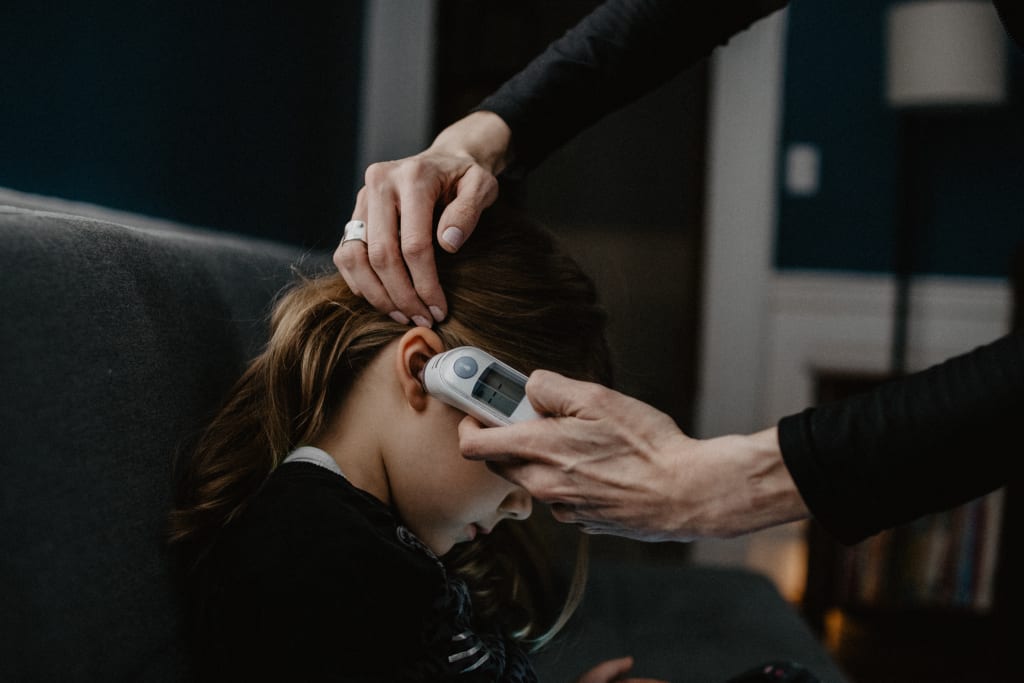"The Gross but Essential Truth: Unveiling the Intricacies of the Human Temperature Control System".
The fact that Your Temperature Control System Is A Little Gross

Introduction:
The human body, a marvel of biological engineering, possesses a temperature control system that, while essential for maintaining optimal functioning, can be deemed a little gross when examined up close. This intricate system, governed by physiological processes and regulatory mechanisms, ensures that the body maintains a relatively constant internal temperature. In this exploration, we delve into the fascinating and, yes, sometimes gross details of the human temperature control system.
The Basics of Body Temperature Regulation:
The human body operates within a narrow temperature range for optimal cellular function. The core body temperature is typically maintained around 98.6 degrees Fahrenheit (37 degrees Celsius). However, this temperature can vary slightly among individuals and fluctuate in response to factors such as external environmental conditions, physical activity, and illness.
Heat Production and Dissipation:
Metabolic Heat Production: The body constantly produces heat as a byproduct of metabolic processes, primarily in the cells' mitochondria during the conversion of nutrients into energy. This internal heat production is crucial for maintaining the body's temperature, especially in cooler environments.
Muscle Activity: Physical activities, such as muscle contractions during exercise, contribute to heat production. The more strenuous the activity, the more heat is generated.
Heat Dissipation: To prevent overheating, the body must efficiently dissipate excess heat. This is achieved through various mechanisms, including radiation, conduction, convection, and evaporation.
The Gross but Effective Mechanisms:
Sweating: One of the most effective and, let's admit it, a little gross mechanism for cooling the body is sweating. Sweat is produced by sweat glands distributed across the skin's surface. As sweat evaporates, it absorbs heat from the skin, providing a cooling effect. While the idea of sweating may seem less than glamorous, it is a vital and efficient means of thermoregulation.
Vasodilation: The body regulates blood flow to the skin through a process called vasodilation. Blood vessels near the skin's surface dilate, allowing increased blood flow and heat dissipation. This is why your skin may appear flushed when you're hot or after exercising.
Shivering: In colder environments, the body activates a mechanism known as shivering. Shivering is an involuntary muscle contraction that generates heat to raise the body's temperature. While it may not be the most elegant response, it is a crucial part of the body's adaptive strategy to combat cold temperatures.
Vasoconstriction: In contrast to vasodilation, vasoconstriction occurs in response to cold conditions. Blood vessels near the skin's surface constrict to minimize heat loss. This mechanism helps to conserve heat and maintain core body temperature.
The Role of the Hypothalamus:
At the center of the body's temperature regulation is the hypothalamus, a region in the brain that serves as the body's thermostat. The hypothalamus constantly monitors the temperature of the blood and receives input from temperature receptors in the skin. Based on this information, it orchestrates appropriate responses to maintain the body's temperature within the desired range.
When the body's temperature deviates from the set point, the hypothalamus triggers physiological responses to bring it back to the norm. For example, if the body is too hot, the hypothalamus signals for sweating and vasodilation. If the body is too cold, it initiates shivering and vasoconstriction.
Challenges to Temperature Control:
Certain conditions and situations can challenge the body's temperature control system:
Fever: Fever, a common response to infection or illness, involves the hypothalamus resetting the body's temperature to a higher level. This is the body's way of creating an environment less hospitable to invading pathogens.
Dehydration: Inadequate fluid intake can hinder the body's ability to produce sweat efficiently, impacting its cooling mechanisms. Dehydration can compromise the body's ability to regulate temperature, leading to overheating.
Extreme Environmental Conditions: Exposure to extreme temperatures, whether hot or cold, can strain the body's temperature control system. Prolonged exposure to high temperatures without adequate cooling mechanisms can result in heat-related illnesses, while extreme cold can lead to hypothermia.
Individual Variability:
It's important to note that individuals may vary in their response to temperature regulation. Factors such as age, fitness level, and acclimatization to specific environmental conditions can influence how effectively an individual's temperature control system operates. Children and the elderly, for example, may have less efficient thermoregulation, making them more susceptible to temperature-related challenges.
Conclusion:
While the human temperature control system may elicit some discomfort or even evoke a sense of grossness, its intricacies are a testament to the body's adaptive brilliance. Sweating, shivering, vasodilation, and vasoconstriction—these mechanisms, although sometimes a little messy, are indispensable for the body's survival in a diverse range of environments.
As we navigate the discomforts of sweating during a workout or shivering in the cold, let's take a moment to appreciate the finely tuned orchestra of physiological processes that work together to maintain our internal temperature. The gross but effective nature of these mechanisms underscores the dynamic and resilient nature of the human body, ceaselessly adapting to the ever-changing conditions of the world around us.





Comments (1)
Hello Fatima, AI is permitted on Vocal but it is a Vocal policy that content created with AI is mentioned at the start of the story/article. Your article/story has many telltales of AI-generated content. If you don’t correct this the content may be removed by Vocal and/or you may be banned from the Vocal.